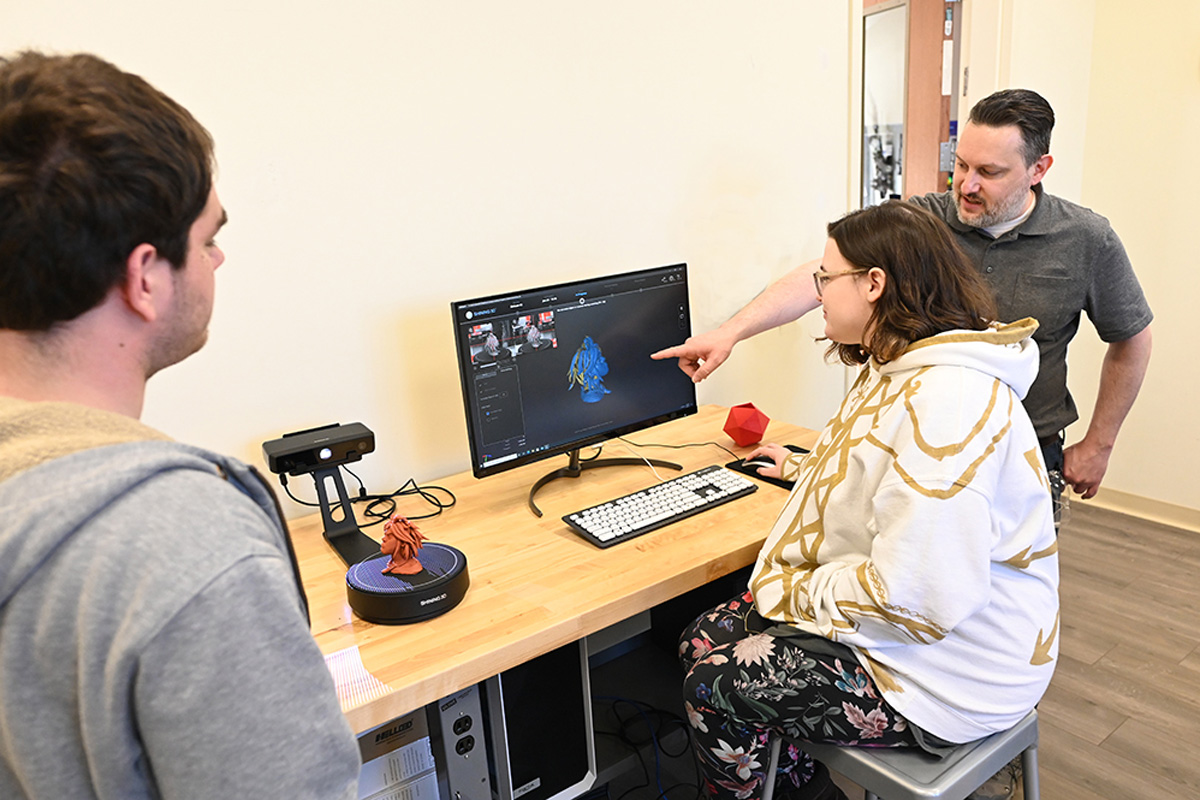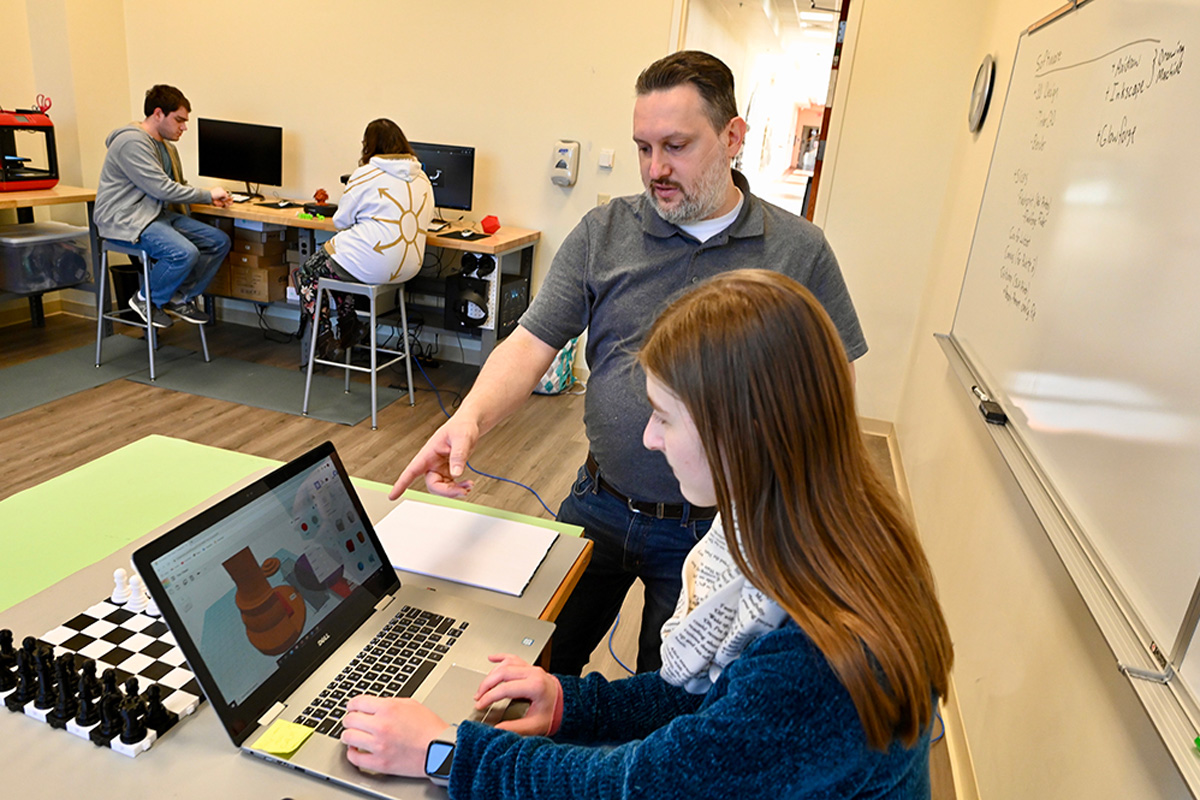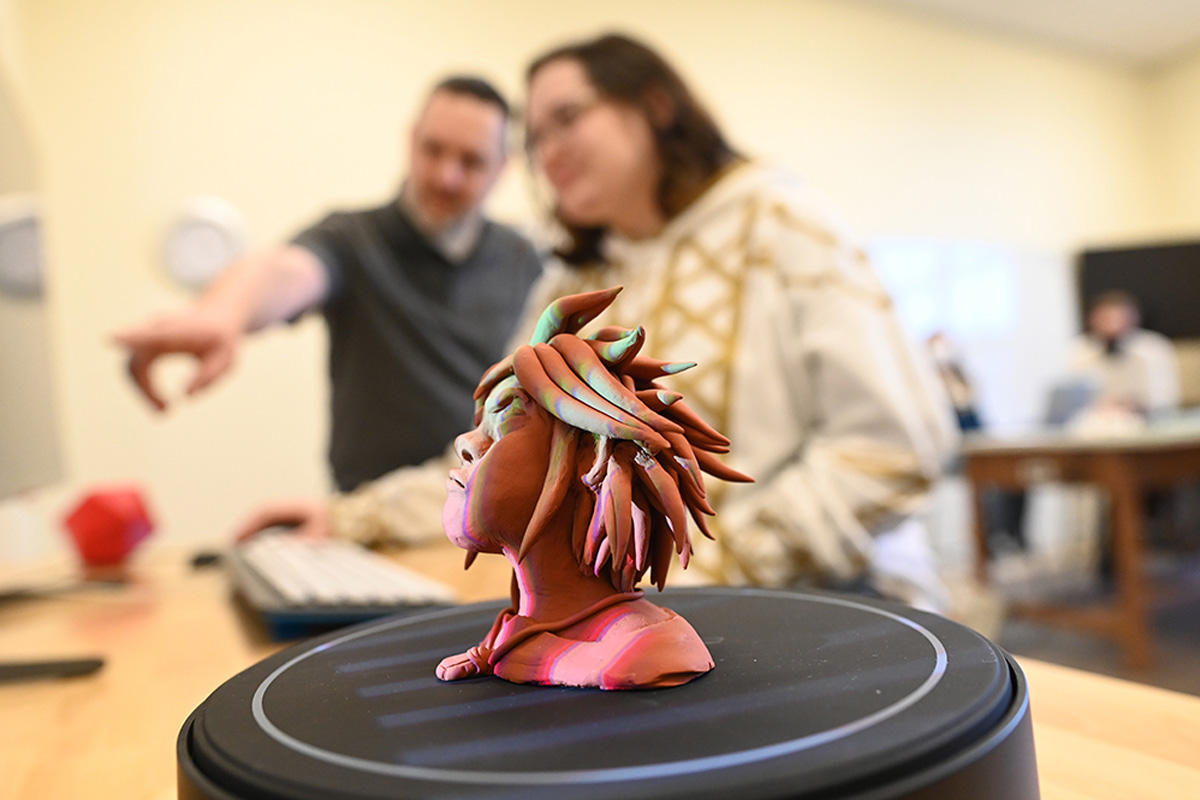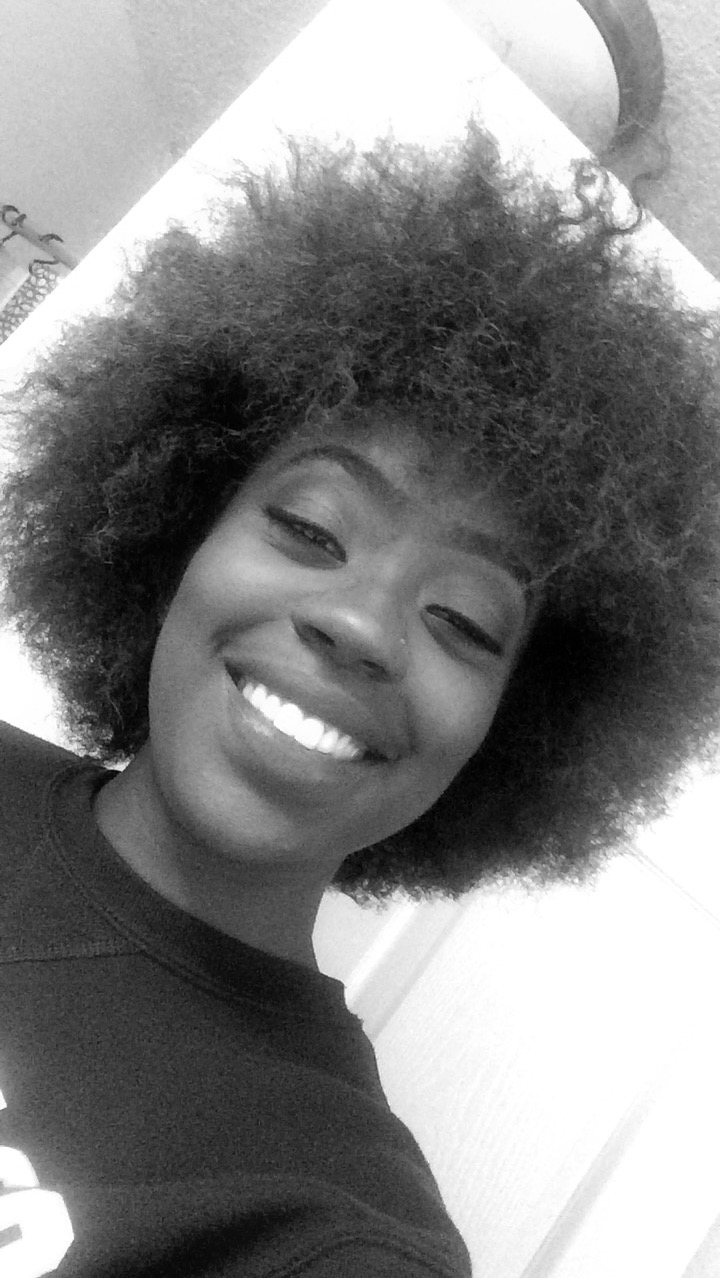Hayden Grambling is a builder. The Belhaven University sophomore grew up fixing things around his grandmother’s house and, in the eighth grade, he built his first computer.
The easy part was doing the research on how to build a computer, and the hard part was getting the money for the parts. But he says it’s worth it in the end to watch an assembly of parts come together to create something beautiful.
“I’ve never had such a better feeling than pressing the power button and seeing the lights turn on,” Grambling told the Mississippi Free Press on Aug. 14.
The Indianola native wasn’t aware what the maker movement or maker culture was until his adviser and professor, Dr. John Estes, mentioned plans to create a maker program on campus. Estes is a professor of mathematics and computer science, the chair of mathematics and director of engineering partnerships at the college.
Belhaven University Art and Design Professor Nate Theisen, also the co-chair of his department, explains the maker movement as a specialized outgrowth of the DIY (do it yourself) culture. People can make anything from something as simple as a machine that sorts M&M’s by color to automatic gardening systems.
“(Estes) said he wanted to get together with Nate and create what’s called the maker campus. Even if you’re a theater major or a business major, someone who wouldn’t even touch any of those buildings, I want it to be where anyone can go, anyone can use this equipment and everyone can learn,” Grambling said.
The sophomore mathematics and electrical engineering major said he is looking forward to the new program as he is only limited to the math department due to his class schedule. There is plenty of equipment in the art and design department that he would love to have access to, like their virtual reality headgear, and now it’s at his disposal.
“If I want to learn something on computer science, mess around with Arduino or robots, I can do that. If I want to go to the art department, get into a whole other reality, a laser cutter, a wood CNC machine, I can do that now. I have access to all of it,” Grambling said.
Sharing Resources and a Vision
Dr. John Estes and Professor Nate Theisen are on opposite sides of the Christian institution’s campus. Their daily interaction was minimal, but a new partnership resulted from a conversation at the school’s community fair.
“We realized how much overlap there was and that some of our students were already talking with each other about collaborating on projects,” Estes told the Mississippi Free Press. “We thought, why not try to make it a little bit more official where we can kind of share resources, a long-distance vision of what we want to do and what we want our students to do.”

Their talks ushered in the Belhaven Creative Labs, which “will bring together students of all disciplines to work on physical projects that foster technical education and creative exploration,” a press release reads.
Students will learn and work on projects of their own interests as it relates to STEAM (science, technology, engineering, arts and mathematics). The program encourages students to seek connections between disciplines and foster an autonomous maker culture at Belhaven.
Unlike many universities with a maker program, Belhaven includes an arts component, a point of pride for the school.
“Our culture more and more is interested in the whole kind of merging of different industries rather than dividing into smaller career choices and disciplines. We’re seeing more of a merging and overlap of industries and careers,” Theisen said.
Under the new program, student projects can include 3D printing, design software, coding, circuitry and microprocessors, sculpting, data science, wood crafting, robotics and virtual reality. The creative labs will be located in different locations across the campus and will contain machines and technology that relate to the discipline that houses them, the art and design professor said.
“I feel like there’s going to be a great opportunity to have a really strong community on campus and teach them some life skills and some job skills, learn how to communicate well, learn how to be creative, and hopefully have some fun doing it and be excited about what they’re doing,” Estes added.
Finding Results to Help Society and Nature
Theisen said the maker culture is very pragmatic and interested in collaboration and finding results that help society or nature. The maker movement is primarily responsible for the growth in 3D printing, which has been incredibly helpful during the pandemic, he added.
“There was this idea that you could print out those masks like the face shield and the straps that hold the mask in place for people who don’t like them around their ears or clients that make them so that they fit better,” he explained.
“When all the PPE stuff started emerging, the maker movement sort of stepped up. There were so many 3D printers around the country, so all these makers ended up using their labs to help support the federal agencies to supplement the PPE industry,” the professor said. In the early weeks of the pandemic, when medical professionals could not get enough protective equipment, several universities in Mississippi supplied hospitals with inexpensive ventilators and 3D-printed masks.

For a student like Hayden, 3D printing has been very helpful with Wolfram Mathematica, a program where a person can put in math equations that are plotted out in a 3D way. And using a 3D printer, the object can be printed and seen in a more realistic way, which helps facilitate learning.
“Normally, you have a whiteboard and drawing a cylinder on a board. … It’s very difficult to see how to work that out. So, using a 3D printer, which you could almost consider art, we can create these 3D objects, and then he can bring them to class. Mathematics and art, they definitely interact. That’s at least how I view it,” Grambling explained.
Dr. Estes said the maker culture is community focused, and it can encourage students to pursue their creative endeavors and develop a curiosity about the world, the issues that exist in society and what solutions are available.
A few years back, Estes said, he had a student who wanted to be an engineer that designed prosthetics that are not just functional, but look good. He had taken drawing courses on top of his engineering courses and recently got accepted into Auburn University’s Industrial Design program.
Estes believes the A in STEAM has been diminished due to the background of the people who are teaching the STEM courses, who often do not have much experience in the arts.
“We’re excited that we get to offer that or put it in the forefront to show it just develops creativity. Studying the arts develops creativity and really the best engineers, the best sciences are able to tap into that creative aspect of their other job,” Estes said.






